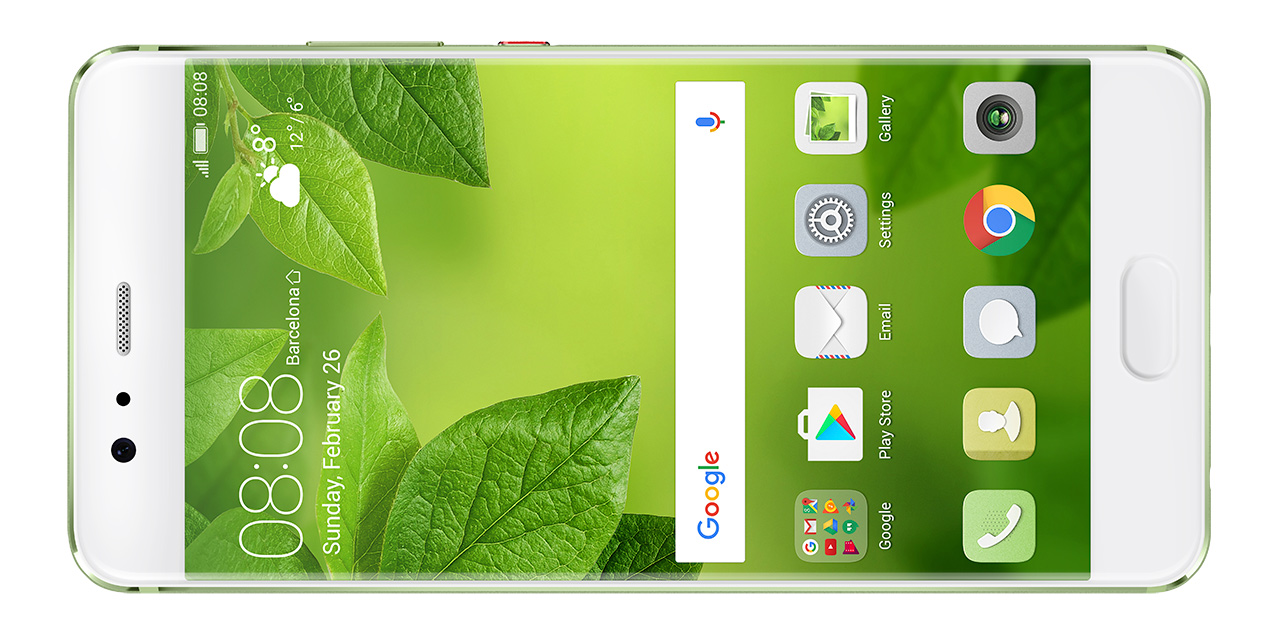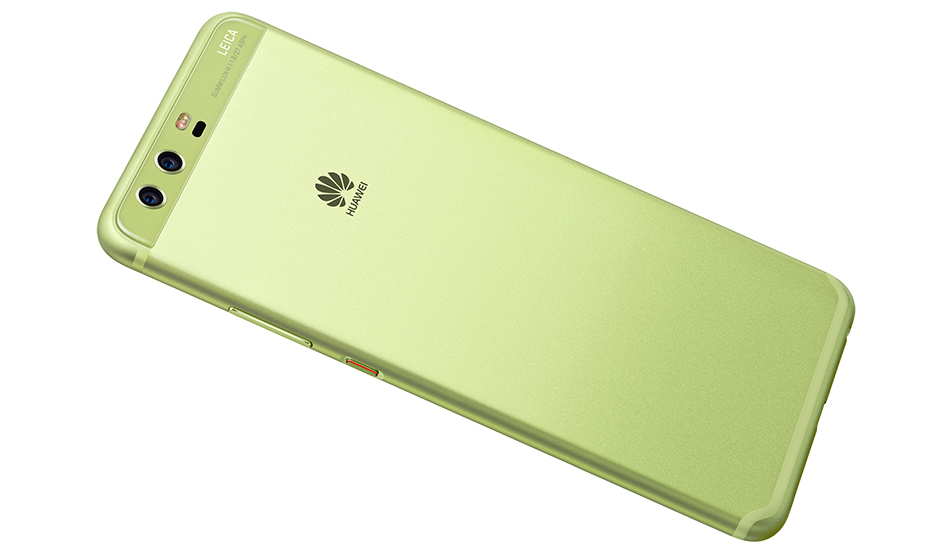Huawei P10 and P10 Plus: Performance & Battery Life Report
by Matt Humrick on May 12, 2017 7:00 AM EST
Huawei is clearly focused on improving the performance of its flagship phones. The P9 and its Kirin 955 SoC performed well in our tests and was smooth and quick during everyday use. For the P10 and P10 Plus, Huawei has tweaked the underlying hardware and software to make them perform even better for longer.
Huawei’s EMUI software includes several features to keep the system feeling more responsive. Using the F2FS filesystem for the /data partition improves storage performance, and Huawei’s new “Machine Learning algorithm” prioritizes system resources (CPU, memory, and storage) to improve responsiveness and performance for the foreground app. Huawei is also using compression to increase the amount of data held in working memory.
| Huawei P10 Series | ||
| Huawei P10 | Huawei P10 Plus | |
| SoC | HiSilicon Kirin 960 4x Cortex-A53 @ 1.84GHz 4x Cortex-A73 @ 2.36GHz ARM Mali-G71 MP8 @ 1037MHz |
|
| Display | 5.1-inch 1920x1080 IPS LCD | 5.5-inch 2560x1440 IPS LCD |
| Dimensions | 145.3 x 69.3 x 6.98 mm 145 grams |
153.5 x 74.2 x 6.98 mm 165 grams |
| RAM | 4GB | 4GB / 6GB |
| NAND | 32GB / 64GB / 128GB + microSD |
64GB / 128GB / 256GB + microSD |
| Battery | 3200 mAh (12.23 Wh) non-replaceable |
3750 mAh (14.33 Wh) non-replaceable |
| Modem | HiSilicon LTE (Integrated) 2G / 3G / 4G LTE |
|
| SIM Size | 1x or 2x NanoSIM | |
| Wireless | 802.11a/b/g/n/ac 2x2 MU-MIMO, BT 4.2, NFC, GPS/Glonass/Galileo/BDS | |
| Connectivity | USB 2.0 Type-C, 3.5mm headset | |
| Launch OS | Android 7.0 with EMUI 5.1 | |
| Software Version Tested | Android 7.0 VTR-L09C432B112 |
Android 7.0 VKY-L29C900B109 |
Inside the new phones is HiSilicon’s Kirin 960 SoC, which uses a big.LITTLE arrangement of four ARM Cortex-A73 CPUs and four Cortex-A53 CPUs. When we looked at the Kirin 960 earlier this year, we found that its A73 core showed higher integer IPC than the Kirin 950/955’s A72 core, but that floating-point IPC generally regressed. The Kirin 960 registered improvements to the memory subsystem too. Even though our lower-level testing produced mixed results, the Kirin 960, which is also used in Huawei’s Mate 9, performed well when running common workloads such as web browsing and photo editing.
In addition to the new CPU, the Kirin 960 also includes a significantly upgraded GPU. The Mali-G71MP8 includes twice as many cores as the Mali-T880MP4 GPU in Kirin 950/955. It’s also based on ARM’s new Bifrost architecture, which includes a number of improvements over the previous Midgard architecture that should help improve shader core utilization.
Huawei, like other OEMs, is currently struggling to procure some of the other internal components—notably NAND and RAM—which can impact overall system performance. Samsung, SK Hynix, and Toshiba have said that they are struggling to produce enough flash memory in the face of increased demand, especially for higher density modules, and issues with ramping up 3D NAND production. This shortage, which applies to DRAM as well, started in 2016 and will likely extend through the remainder of 2017.
With supplies short and component costs rising, Huawei confirmed that it is sourcing memory components from multiple suppliers and stated that it never committed to using any specific type of NAND. Indeed, P10 owners are claiming that some units are using eMMC instead of UFS NAND, along with both LPDDR3 and LPDDR4 RAM. Multi-sourcing is actually very common among smartphone OEMs, particularly larger ones such as Apple, Huawei, LG, and Samsung, for a number of different components, including NAND, RAM, display panels, modems/RF, and camera sensors. Apple has even sourced SoCs from different foundries. Problems can arise, however, if the OEM does not hold its suppliers to the same standards and allows parts from different vendors to vary wildly in performance, which, unfortunately, happens all too frequently.
Based on Huawei’s official statement, we have no way to know who its suppliers are, what components they are or are not using (LPDDR3/LPDDR4, eMMC/UFS), or how many phones are using the potentially slower components. It only said that component selection is random based on the current supply and that there is no way for consumers to know what they are buying before opening the box.
In this report, we’ll establish what components our particular P10 and P10 Plus review units use, and then run them through a series of tests to evaluate everyday performance and battery life. Huawei was able to extend the Mate 9’s battery life over the previous generation, so it will be interesting to see if this is true for the P10 as well.












74 Comments
View All Comments
Matt Humrick - Saturday, May 13, 2017 - link
"At the very least either you or your should add caveat emptor or YMMV, in BIG BOLD letters to the end of the review. The reputation of anandtech.com deserves at least that."It was discussed at the beginning, middle, and end, so I think it was covered well.
"What is the point of the review if the system YOU purchase could have memory a generation behind, storage 2 generations behind, and a different bin of processor?"
This report shows several things:
1) Not all P10s come with alternate memory components
2) It shows what perf/battery life can be when not using the alternate components
3) It discusses the P10 multi-sourcing issue and how it may impact perf/battery life
4) It shows that the type of NAND alone is not enough to predict storage performance
Basically, we want to provide as much info as we can so our readers can make an informed buying decision. Obviously, I would have liked to get a P10 with the alternate components for comparison, but that was not possible.
drajitshnew - Saturday, May 13, 2017 - link
I said "COULD". you admit admit that GOLDEN SAMPLES are a possibilityYou must admit that with a still lower binned SoC, eMMC instead of UHS, DDR3 instead of DDR4, the benchmarks could be materially different.
Matt Humrick - Saturday, May 13, 2017 - link
Yes, that's what I said in the article.AlphaBlaster - Sunday, May 14, 2017 - link
Unless you are chinese, but even then it does not make sense, why exactly do you want Huawei to succeed in the western market? It is a corrupted organization managed by government, the reason why their networking hardware is on a ban list in many EU organizations is because of repeated and consistent backdoors implemented in the hardware and software (Not that Cisco and others wouldn't do that, but there is a difference between giving access to FBI and giving it to your industry competitor). I worked for the czech branch for couple of years on various projects and it was a horrible experience, they did not even try to hide that most of their large contracts - they got pretty big deals to provide LTE hardware for carriers, was obtained via bribes. There is absolutely no reason to be giddy about Huawei growing exponentially.John Other - Sunday, May 14, 2017 - link
I was with the people who are horrified by the principle of the idea of components substitution, at first.At least on a flagship.
At least on a product that will sell a lot on specification given the lower rank of the brand in public consciousness.
I think only the final of those three arguments actually counts.
I made a living, once, selling home assembly hifi designs, and so I know that component substitution is both necessary, and a difficult decision for the vendor relationship with customers.
This substitution news broke right at the moment I had to decide on the purchase.
I went ahead, confident that I can return the goods since this is 2017 (or 1997, we've had excellent consumer laws for a long time, providing you avoid silly supplier risks) and can only report I am a happy customer.
And I do not even know what components my P10 contains.
I decided that I would use the phone first, and only after 2 weeks I have to return the device under distance selling law (EU) will I review and if necessary check the components installed.
I almost want to report I have the lesser components, to assuage the furore, because I just doubt that real world impact will manifest unless there is psychological confirmation bias at work.
To criticise a review is maybe a bit much, however the review could make more out of the entire process of decisions that are involved in, and surround, components substitution.
WPX00 - Friday, May 12, 2017 - link
Company can't make enough of something because parts are short, ala Pixel? Customers complain.Company makes more of something with alternative parts, like this? Customers complain.
At the end of the day, the fact of the matter is, supply is hard. Even Samsung can't get enough UFS parts. And Samsung MANUFACTURES these things. What makes you think Huawei can? They have to launch a flagship no matter what.
Meteor2 - Saturday, May 13, 2017 - link
Nobody says it's easy. We're paying them to get it right.I find this shocking; I was warming to Huwei, they make nice SoCs, but this is appalling.
BrokenCrayons - Monday, May 15, 2017 - link
Notably, I would suspect that customers probably aren't complaining. Of the group of us commenting in these articles, I would be willing to bet few to none of us actually bought a P10 or will ever do so.s.yu - Saturday, July 29, 2017 - link
They can sell it high-low specced with the same chassis and different prices. The matter is not whether or not they use different parts but whether or not they were forthcoming and honest about it. They were first deceptive then brazen and unapologetic (and further lied) when word got out.Elsote - Friday, May 12, 2017 - link
Until when will we see A53 cpus in flagship phones?